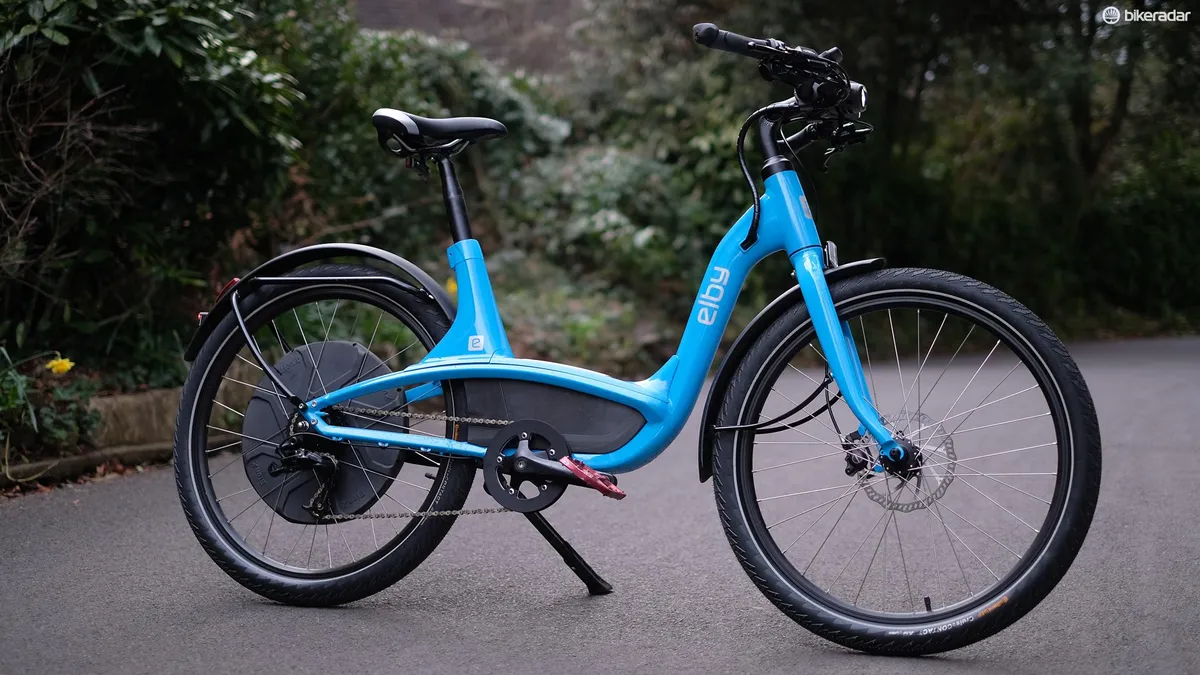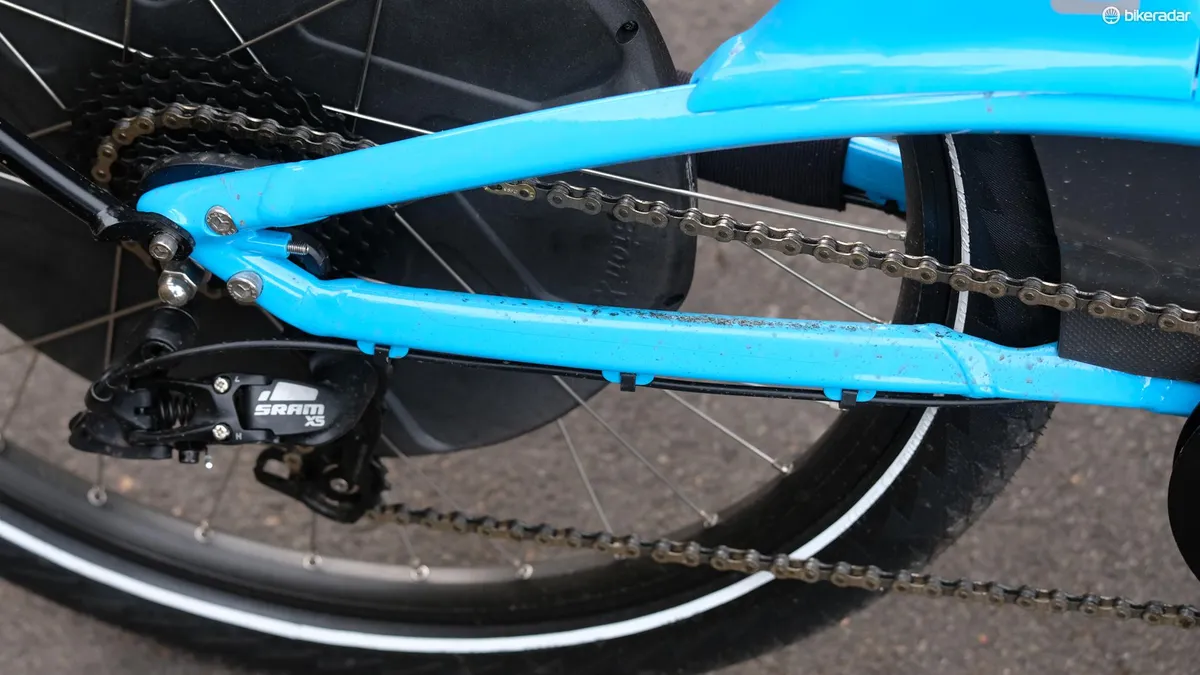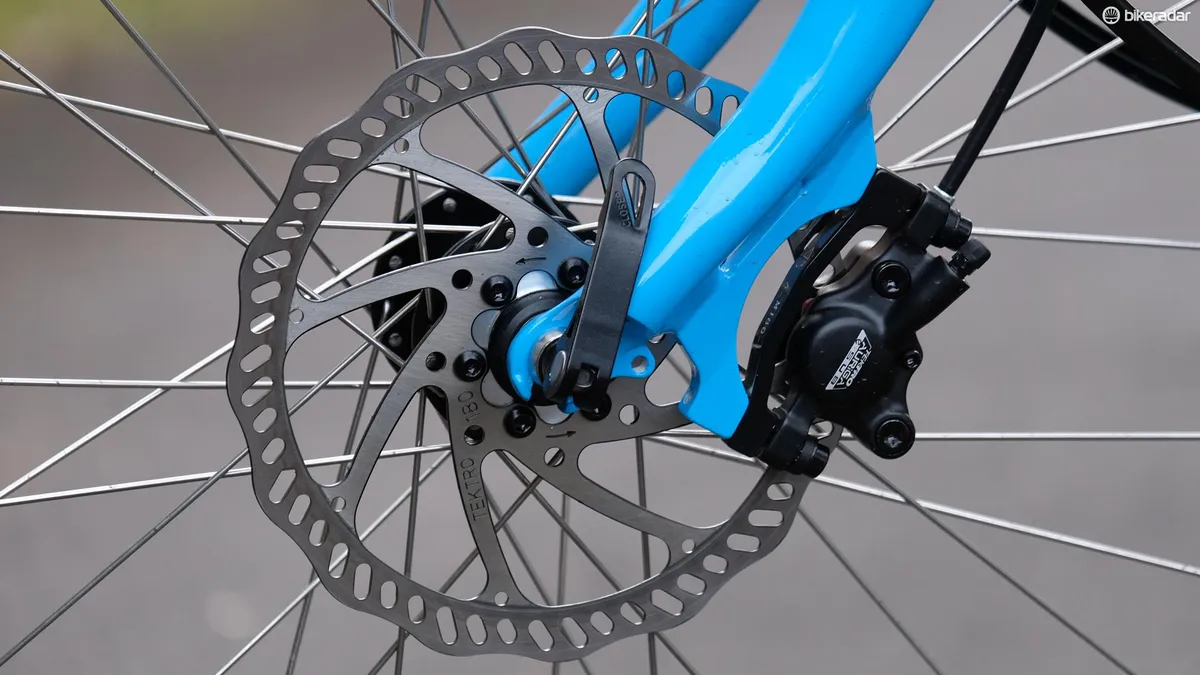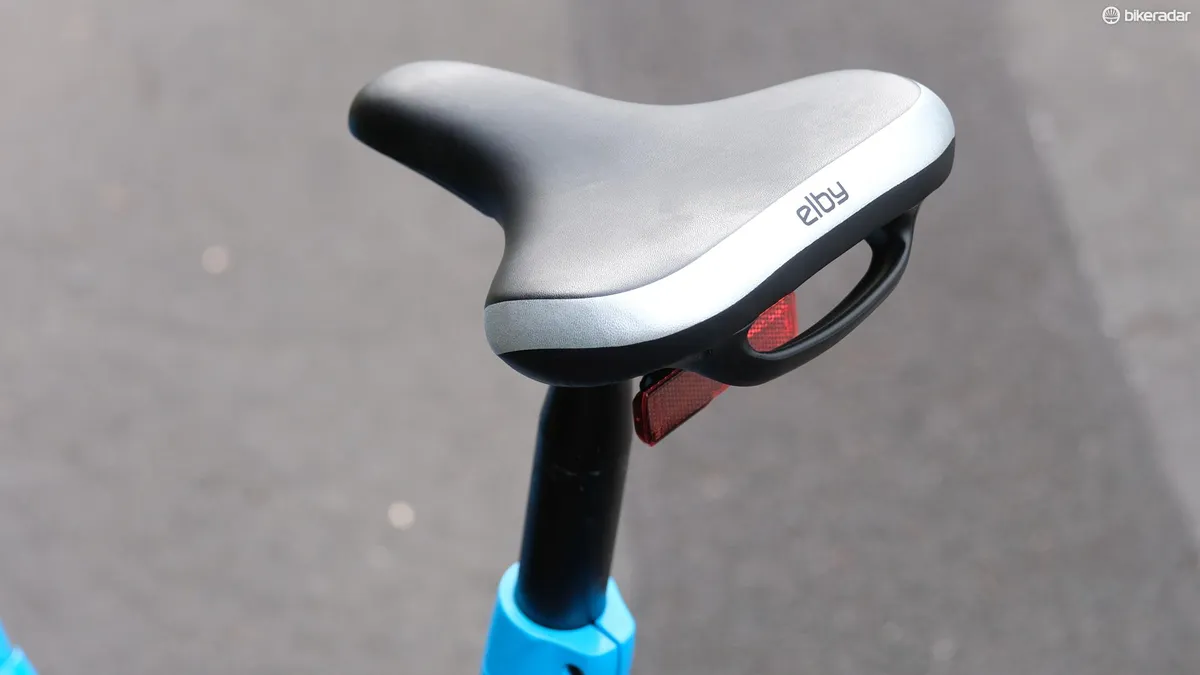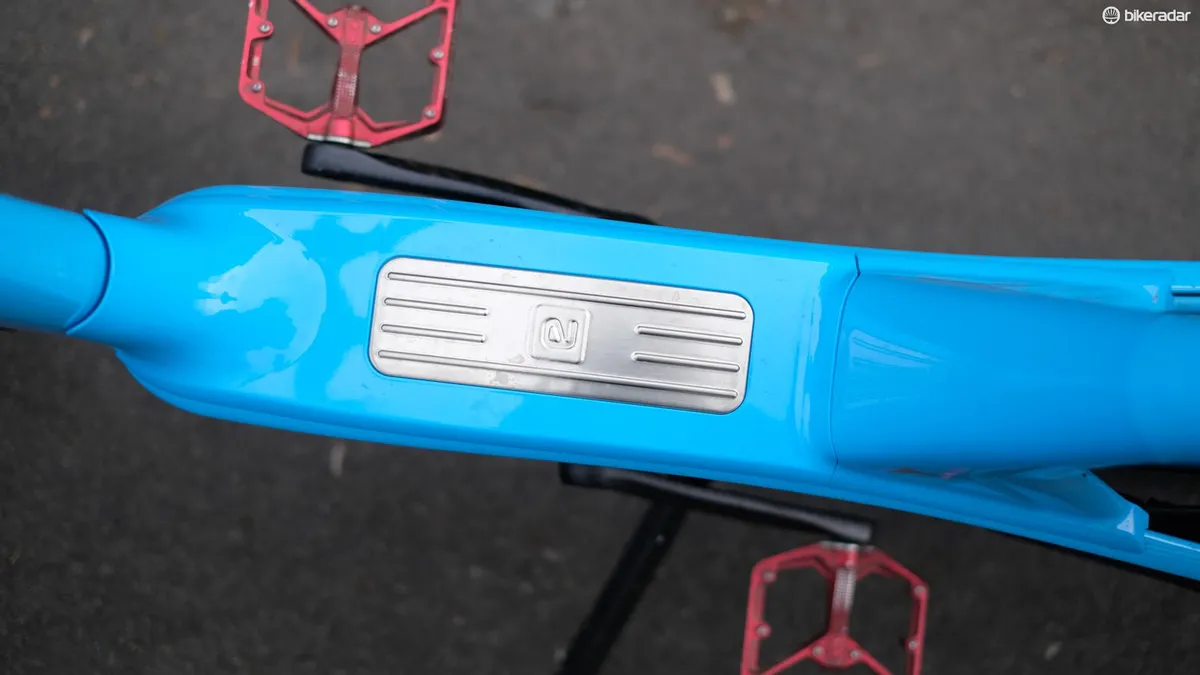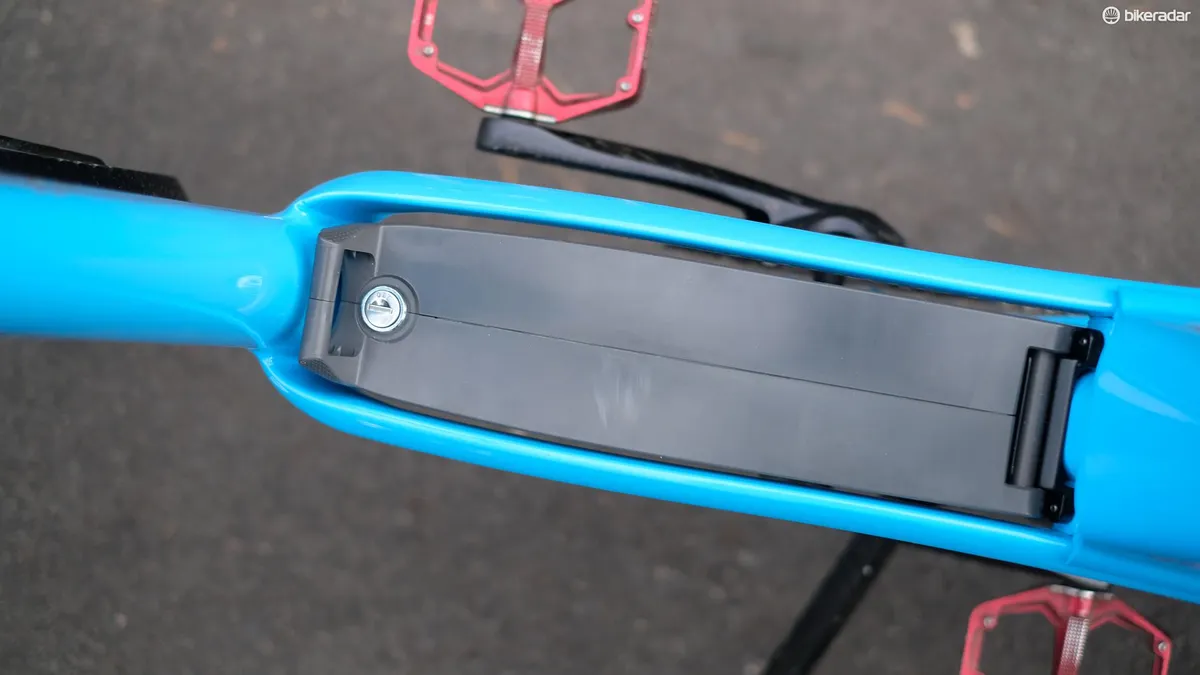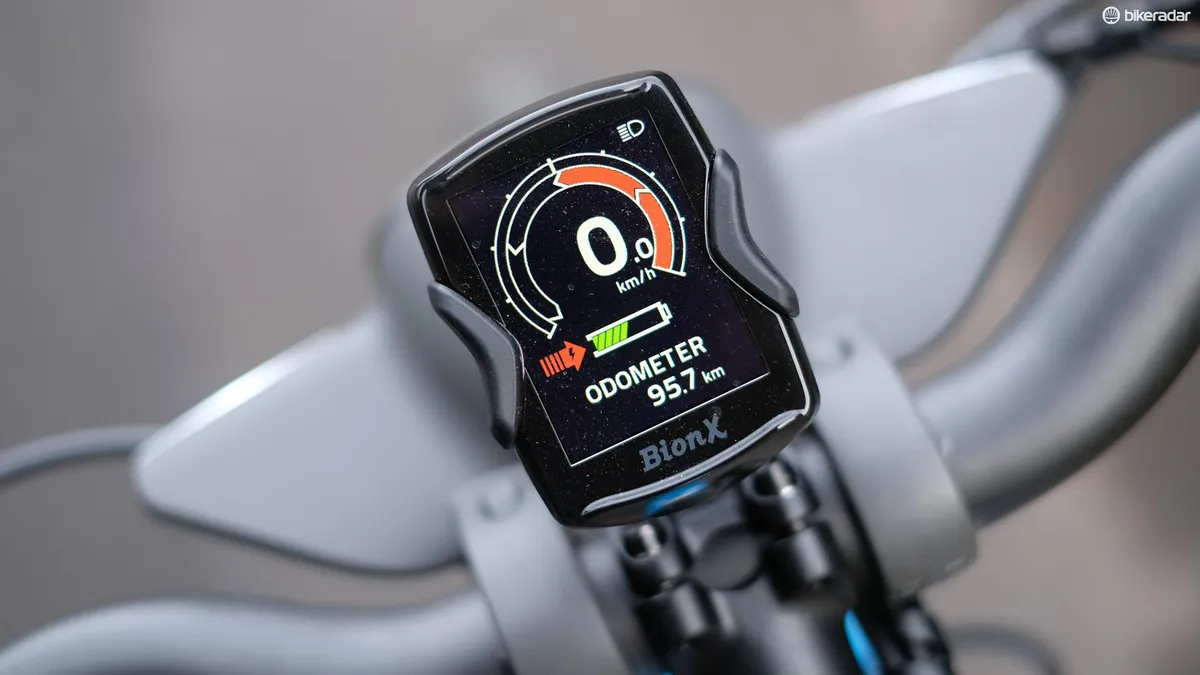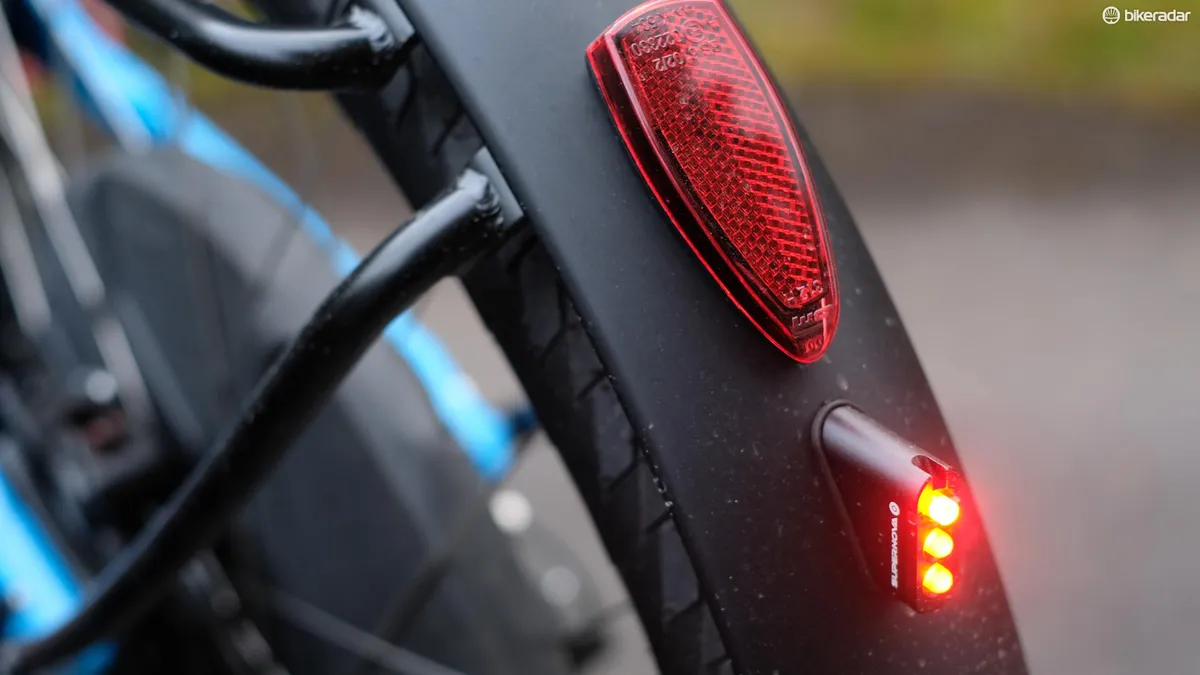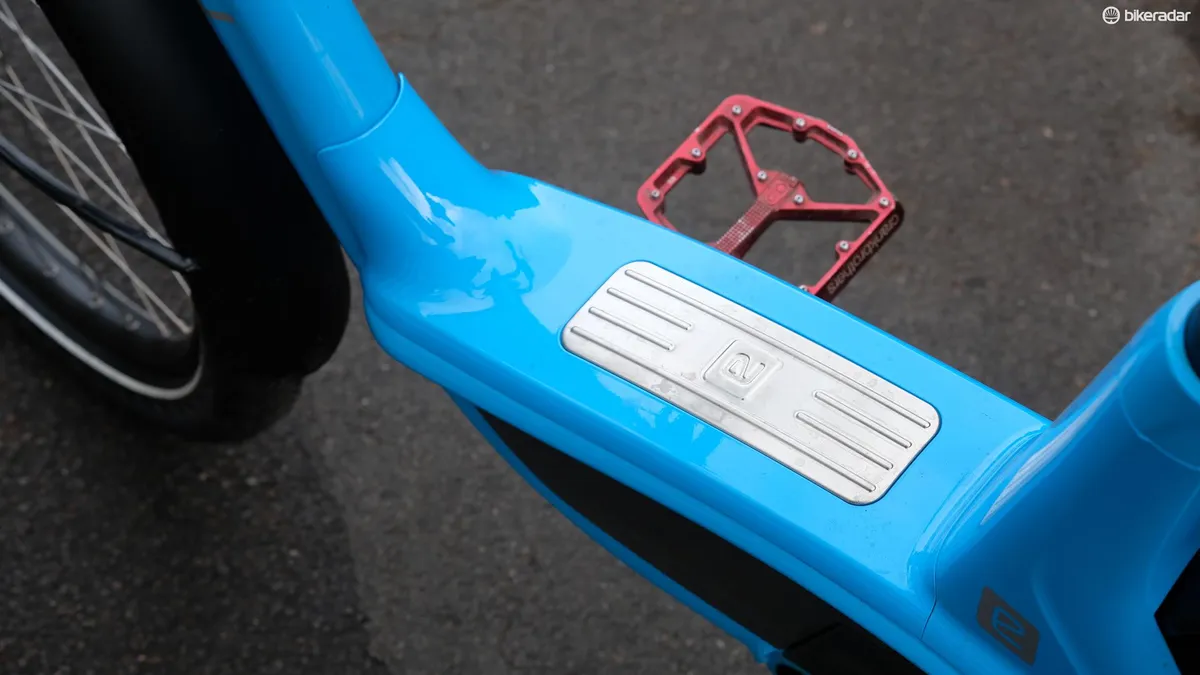The Elby is a well-executed electric bike that offers an excellent ride. Its intuitive controls and practical touches make it ideal for the commuter who values a stress-free ride to work. It’s not perfect but it is definitely one of the best bikes of its kind.
The Elby frame
It’s hard not to notice the Elby, with its swooping low-slung frame and retro-ish appearance. My bright-blue test bike was something of a conversation starter, so Elby riders should get used to speaking to random folk at traffic lights.
The phrase “one size fits all” is not usually what you want to read on the spec of a bicycle frame, but the Elby with its lengthy seatpost and adjustable stem did a great job of accommodating the different shapes of the various people who tried this bike.
Its upright seating position and swept-back handlebars are closer to that of a Dutch bike than a flat bar hybrid, making for good visibility in traffic and a relaxed spine. Its step-thru -style frame also makes it easy for those who are less flexible to get on and off.
The Elby kit
The pulsing heart of the Elby is a D-series motor system from BionX. Positioned in the rear wheel, the motor is fed by an 11.6Ah removable battery pack that’s placed above the bike’s bottom bracket and concealed by a removable plastic panel.
On top of its four levels of assistance, the BionX motor can also provide regenerative braking, which feeds power back to the bike’s battery during descending or braking. A smart and relatively unique feature.
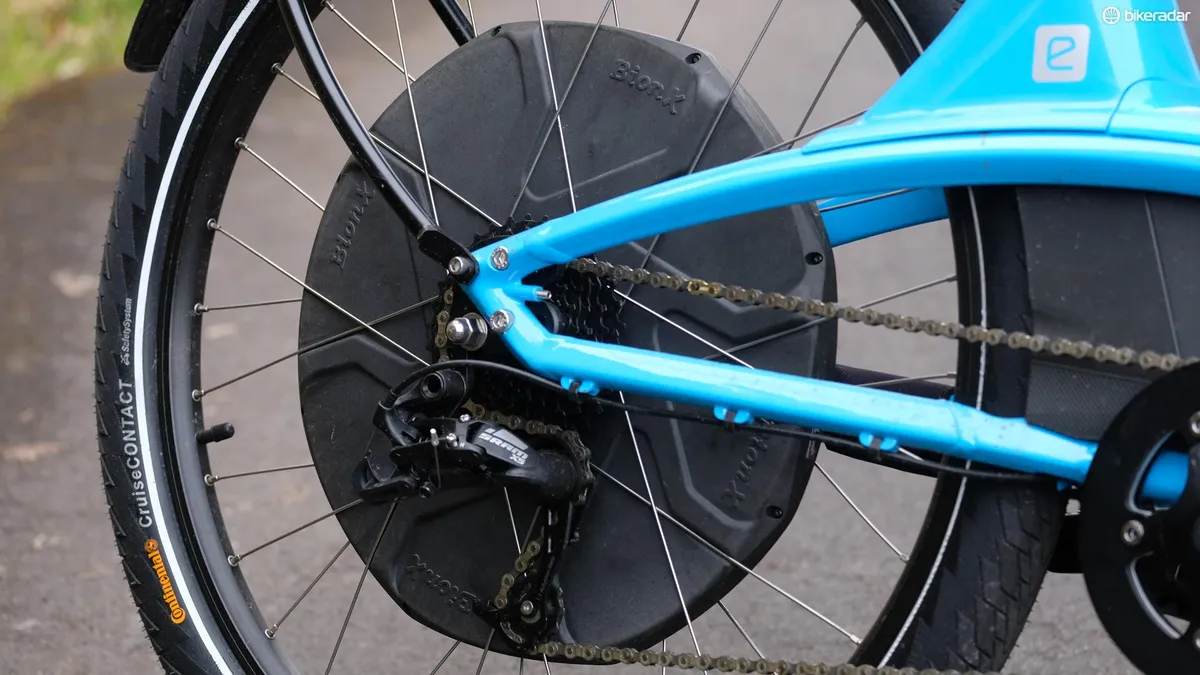
Praise must go to the BionX RC3 handlebar unit, which positions lots of buttons in a small space in a way that works particularly well. The Elby is powered on and off using this switch, which also controls the motor’s assistance/regenerative braking and controls the bike’s integrated Supernova lights.
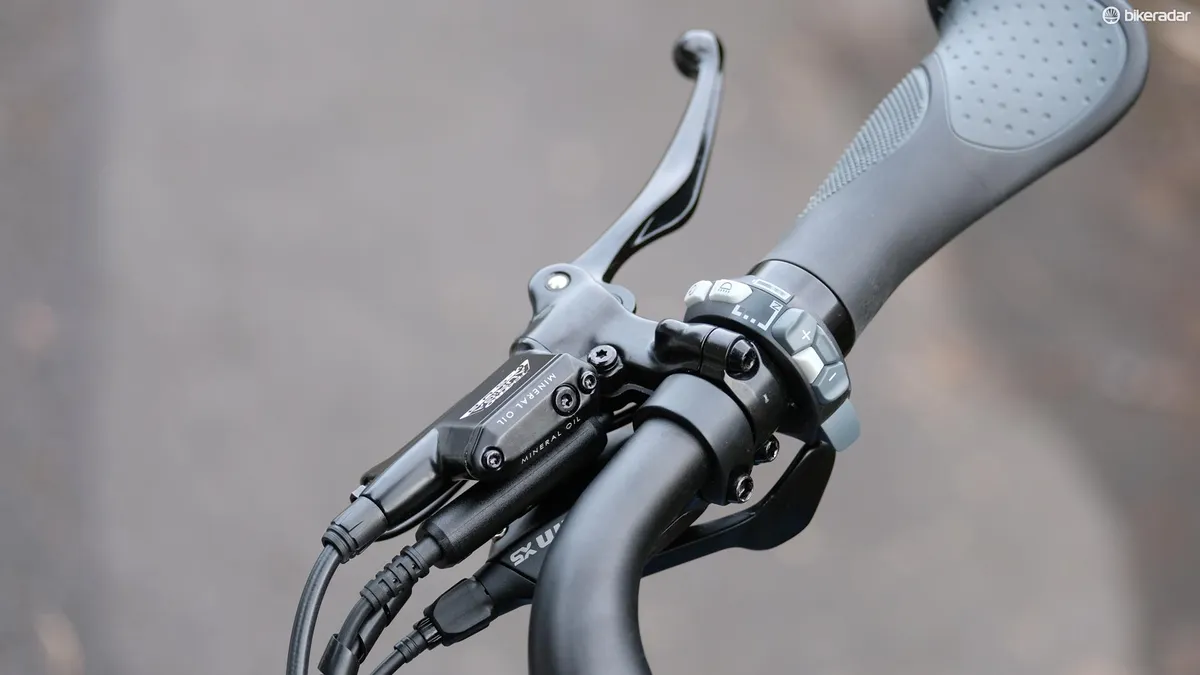
Also included is a display unit, which mounts at the bike’s handlebar for a prominent — but not distracting — overview of your ride stats and the condition of the bike’s battery. If tech integration is your thing then you may be pleased by Elby’s dedicated smartphone app, which hooks up with your phone’s GPS to record useful ride stats.
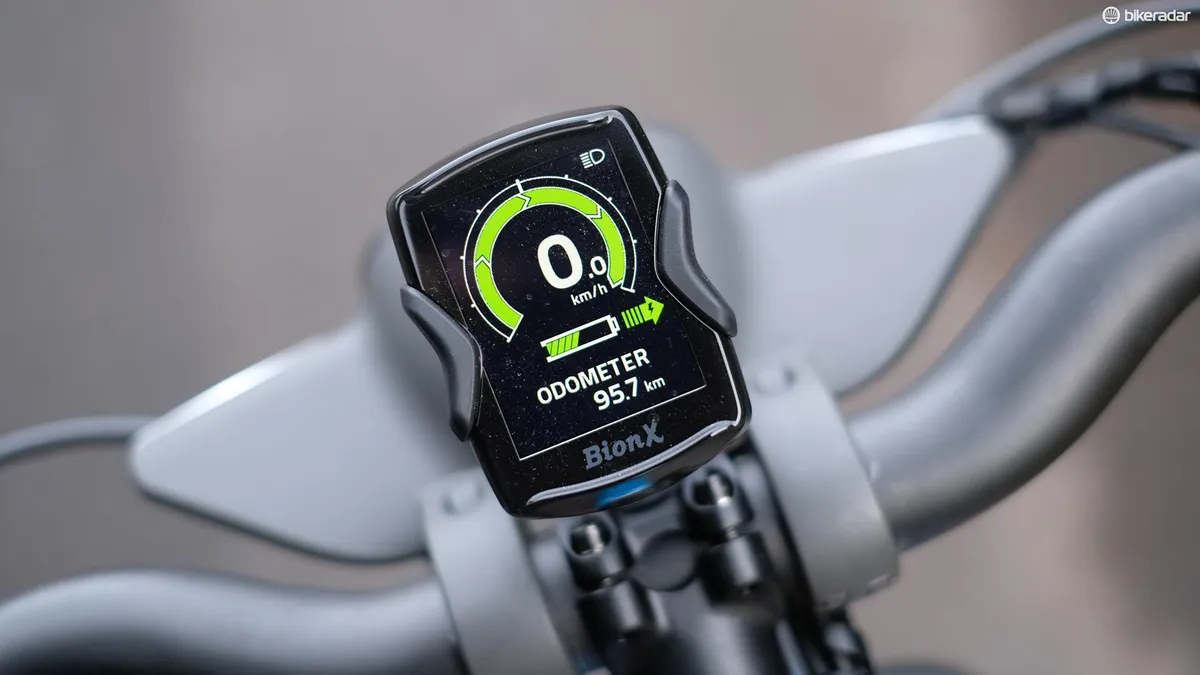
The Elby ride experience
The Elby’s comfortable sit-up-and-beg style riding position may hint at a relaxed ride — and it sure can deliver one — just don’t go thinking that it’s a slouch.
Stomp the pedals and the rear axle will deploy a satisfying shove, the sort of mid-range power that makes for very safe overtakes, but it’s the smooth delivery of this power that really impresses. There’s none of the hesitation or loading/unloading feeling that is sometimes felt with a mid-drive system.
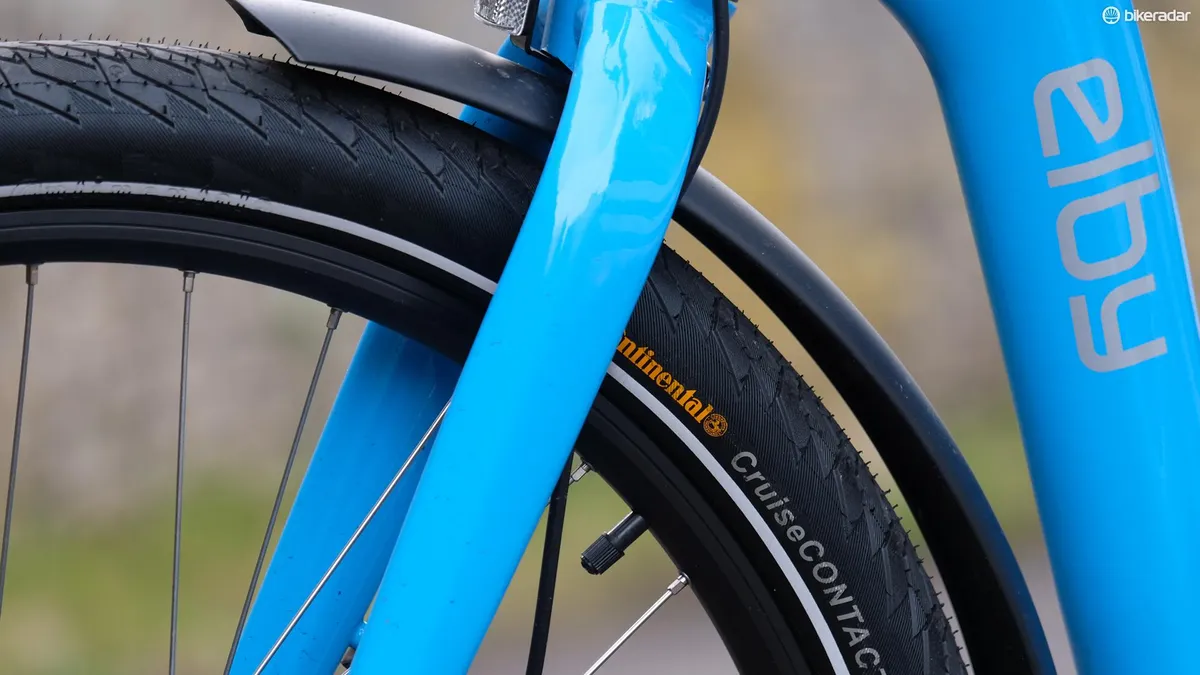
Like all e-bikes sold in the UK, my Elby would only provide assistance up to the 15.5mph (25km/h) legal limit. It’s possible to pedal over this figure, but it quickly becomes quite a workout.
Find a big enough hill though and you’ll have no problem reaching high speed on the Elby, a couple of times I saw 55km/h from the bike’s display with plenty of assistance from gravity and the bike felt perfectly planted and safe at such speed. The Tektro hydraulic brakes never had any issues stopping the 25kg Elby and remained predictable and effective throughout the test duration.
The Elby also corners well, banking with little hesitation on its fat Continental tyres. It almost handles as well as Trek’s brilliant Super Commuter, which is no small feat when you consider the Super Commuter is a flat bar hybrid.
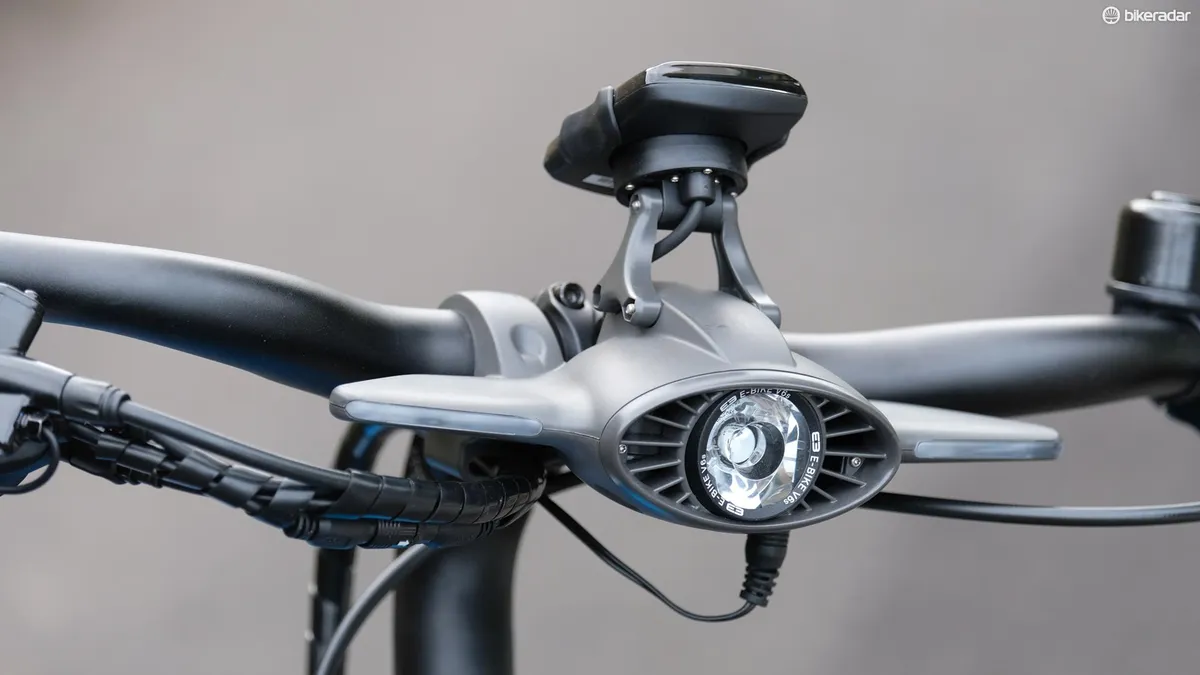
If a workout is what you’re after then the Elby’s power can be dialled down to a level that makes it feel almost indistinguishable from a bike without assistance, or, if you really feel the urge to burn you can cut the motor’s power altogether.
The Elby uses a SRAM X5 9-speed trigger shift transmission that works very well, and, crucially, syncs very well with the BionX motor at the rear wheel.
Just like the motor’s assistance level, the regenerative braking feature can be cycled through four settings. Each setting introduces more drag, with the lowest feeling like riding with a sticky rear brake and the highest feeling similar to a hard braking effort at the back wheel. I found a strange satisfaction in using this feature, though I never noticeably saw the bike’s battery level increase with its use.
Elby claims a range of up to 135km for its battery, and if that sounds like a bold claim then that’s because it is. In reality, my testing found the Elby to deliver more like a third of that figure, though I wasn’t particularly economical and my commute is unusually hilly.
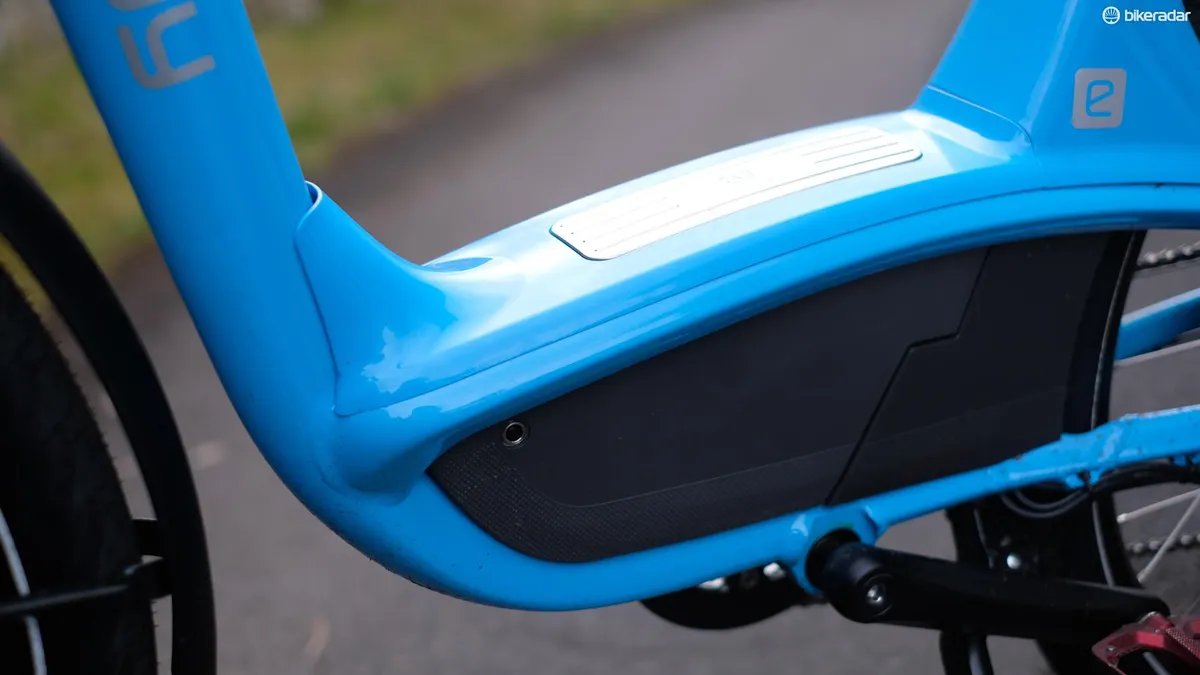
Though that sounds disappointing, I think unless you’ve got a particularly long or extreme commute then the Elby should be able to stay away from the mains for a good few days. I expect this bike could get close to its claimed range figure, but to do so would likely involve enough pedalling that it would negate the bike’s motorised assistance.
The battery indicator does a great job of keeping you informed though, and the very few times I did run it down to empty I appreciated the bike’s ability to reserve a bit of power in what appeared to be some form of get-me-home mode.
The Elby laughs in the face of wet weather thanks to an excellent set of full-length mudguards. Integrated into the rear mudguard is a sturdy pannier rack. The Elby’s lights are decent too, providing crisp lighting at both ends of the bike.
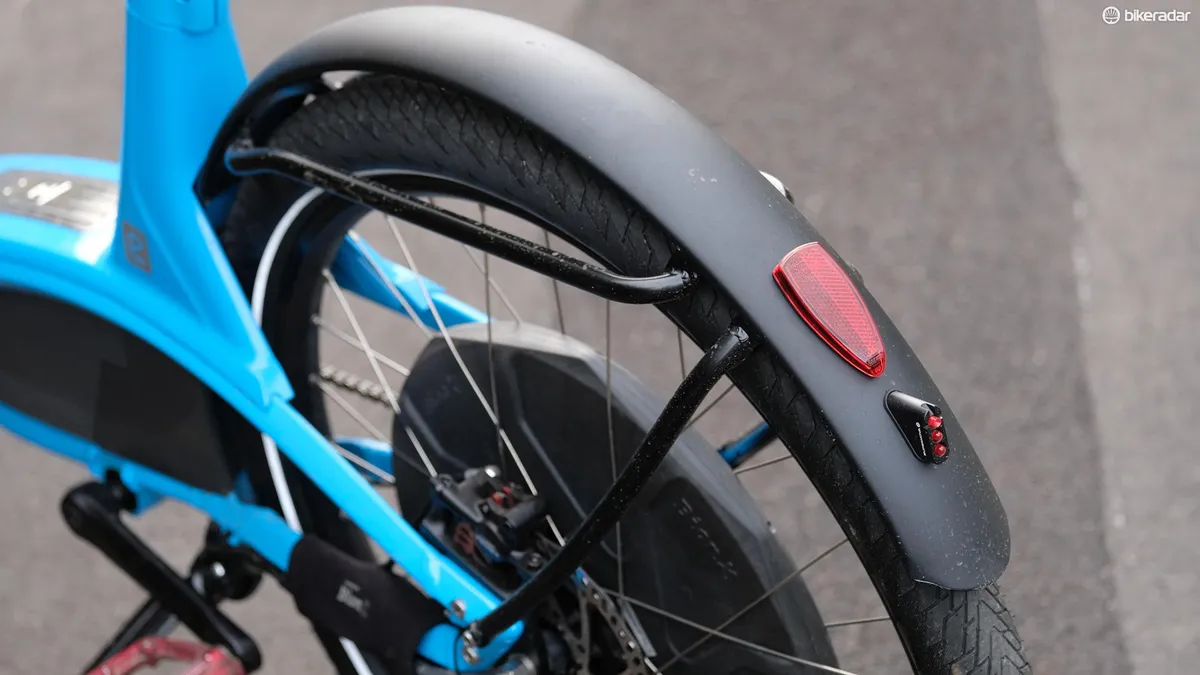
On occasion, the plastic battery panel became noisy, and I found its handlebar and stem were also prone to creaking, spoiling what was otherwise a very quiet bike.
Dropping off kerbs did not impress the Elby, when I did so it beeped in protest and cut all power to its motor. Like all of the best tech in my life, switching it off and back on again remedied this hiccup.
The Elby has to be one of the best bikes I’ve had the pleasure of living with, requiring only air in its tyres and electricity in its battery despite several hundred kilometres of test time. As long as you aren't expecting to meet Elby’s best-case scenario range figure then I doubt you’ll regret buying this bike, it really is excellent.
- Price: €3,299
